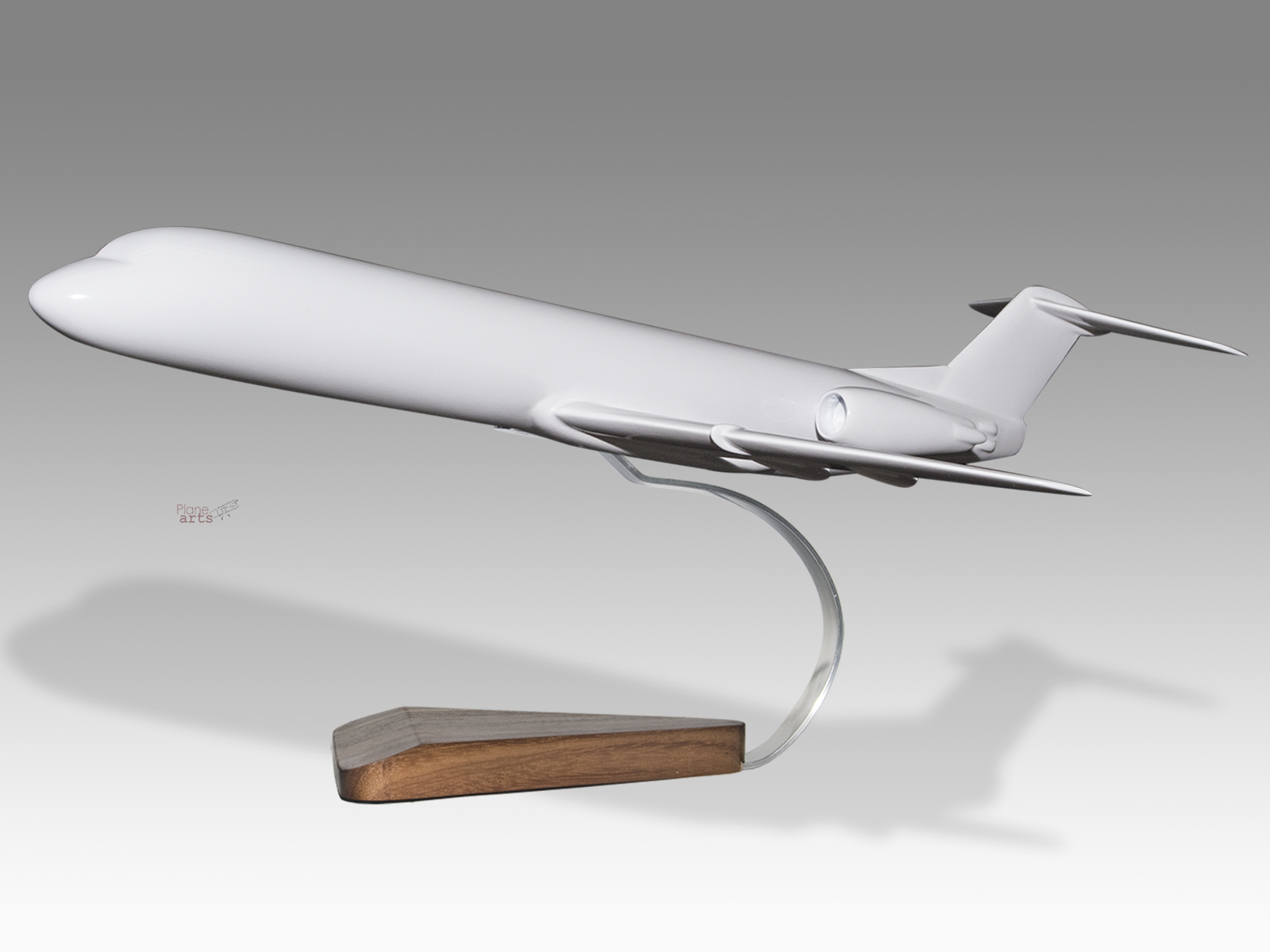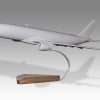Fokker 100 painted in your own choice of livery or markings
Production Time 9 to 10 weeks
Shipment is by FedEx, UPS or DHL International Express Courier with a normal door-to-door delivery time worldwide of within 2-3 business days after dispatch. Due to the current volatility of world fuel prices, the amount mentioned here is our best estimate for DHL and UPS and may be subject to change at the time of shipping.

Model Description: Fokker 100 Wood Replica Scale Custom Model Aircraft
Manufacturer: Fokker
Wingspan: 13.4 Inches (34 Centimeters)
Height: 4.1 Inches (10.4 Centimeters)
Scale: 1:82
$279.50
Production Time 9 to 10 weeks
-
United States dollar ($)
-
Pound sterling (£)
-
Euro (€)
-
Australian dollar ($)
-
Canadian dollar ($)
-
Singapore dollar ($)
-
Swiss franc (CHF)
-
Japanese yen (¥)
-
Danish krone (kr.)
-
Hong Kong dollar ($)
-
Norwegian krone (kr)
-
Swedish krona (kr)
-
United Arab Emirates dirham (د.إ)
General Product Description
We keep in stock what we refer to as “blanks” which are models finished to the stage of primer painting so that they are ready have the final chosen livery or markings applied. By doing this we can slightly speed up the overall production time of the model. All you need to do is to purchase the “blank” version and then to email us images of what airline livery, markings or colors we should apply. You will note that we charge slightly more for these “ready to paint” models due to the fact that our setup costs for model liveries we have not made before are higher than for those we have done before.
Once you have chosen your own version PlaneArts will copy your choice or design exactly as it is on the real aircraft. It will come as standard with a robust, durable base or stand which is available in a variety of different finishes designed to match your own personal requirements including solid wood, wood with polished metal supports or adjustable wood wall mount and will be ready within about 8-10 weeks from placement of order.
The model will be made of the finest kiln dried renewable mahogany wood (commonly known as Lauan or Meranti) which has undergone many stages of carving and meticulous and careful sanding giving the beautiful, finished museum quality masterpiece. Many collectors and model connoisseurs demonstrate their preference for genuine handmade and hand painted mahogany wood models rather than plastic or die cast (diecast) alternatives due to the overall look and totally different feel of the item - we trust you will find the same. We can however, if required produce the same model in Solid Cast Resin so just click and contact us for further information. Our craftsmen and gifted artisans ensure that our finely handcrafted model airplanes match the precise blueprint details of the original aircraft.
We can also make bespoke scale replicas of any other private / civil commercial airliner or airliners, helicopter, glider, gliders with engines, military jet, warplane jets, propeller warplanes, biplane, triplane, tail fin, spacecraft, rocket or NASA model you require in any airline, military or civilian livery or colors. We also produce model airships, blimp, dirigible, blimps, boat and ship collectibles. Wall plaque or seal for military, government or private customers. Again, by clicking here to contact us just let us know exactly what you need.
The Fokker 100: A Retrospective on a Regional Aviation Icon
The Fokker 100, a regional jet airliner developed by the Dutch aircraft manufacturer Fokker, remains a significant player in the history of aviation despite the last unit being produced in 1997. Known for its reliability and efficiency, the Fokker 100 was a popular choice among airlines for short to medium-haul flights. This article explores the key features, operational history, and legacy of the Fokker 100.
Development and Design:
Introduced in the late 1980s, the Fokker 100 was designed as a successor to the Fokker F28 Fellowship. The aircraft featured a number of improvements over its predecessor, including a larger fuselage, updated systems, and greater passenger capacity. With a typical seating capacity of 97 to 122 passengers, the Fokker 100 filled a niche in the regional jet market.
The aircraft’s design incorporated advanced aerodynamics with a high-wing cantilever monoplane configuration, which provided improved performance and fuel efficiency. The twin-engine jet was powered by Rolls-Royce Tay turbofans, which were quieter and more efficient than the engines used in many earlier models of similar size.
Key Features:
- Capacity and Comfort: The Fokker 100 offered a spacious cabin with a five-abreast seating arrangement, which was favored for its comfort compared to the narrower options on competing aircraft. The interior could be easily customized to suit the needs of different operators, from full passenger service to mixed cargo and passenger configurations.
- Performance: The aircraft had a maximum cruising speed of about 845 km/h (525 mph) and a range of up to 2,600 kilometers (1,620 miles), making it ideal for continental flights. Its performance in hot and high conditions was particularly noted, allowing for operations in challenging environments.
- Operational Cost: One of the Fokker 100’s selling points was its cost-efficiency. The aircraft’s maintenance design was streamlined, and its fuel efficiency was competitive, factors that contributed to its popularity among regional airlines.
- Advanced Avionics: The Fokker 100 was equipped with modern avionics and a glass cockpit, which reduced pilot workload and increased safety. The aircraft featured advanced navigation and flight management systems that were ahead of many competitors at the time of its launch.
Operational History:
The Fokker 100 quickly gained traction in the global market, with major orders from airlines including American Airlines, US Airways, and TAM Airlines. The aircraft proved popular in Australia and Brazil, where its range and performance characteristics suited local aviation needs well. Over 280 units were delivered during its production run.
Despite its commercial success, the financial difficulties faced by Fokker led to the company’s bankruptcy in 1996, which halted the production of the Fokker 100. However, many units remain in service, a testament to the durable design and continued relevance of the aircraft in the regional aviation sector.
Legacy and Conclusion:
Today, the Fokker 100 is seen as a bridge between the first generation of regional jets and the more modern ERJ and CRJ families. Its design principles influenced later regional aircraft designs and its operational philosophy paved the way for the more personalized, flexible service models that prevail in regional air transport today.
Though no longer produced, the Fokker 100 continues to serve on various secondary routes and under less intense operational profiles. Its legacy is one of innovation and adaptation, embodying the transition in regional air travel from smaller, often state-run operations, to the dynamic and competitive sector it is today. This aircraft not only connected cities and people but also helped shape the regional airline industry into what it has become in the 21st century.
| Weight | 6 kg |
|---|---|
| Dimensions | 17 × 13.4 × 4.1 in |




Reviews
There are no reviews yet.